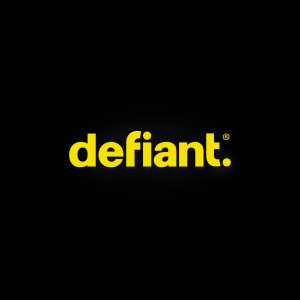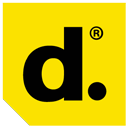Mastering the intricacies of bidding methodologies is non-negotiable for e-commerce brand owners seeking optimal results. One methodology that has emerged as a game-changer, especially within the realm of Meta Ads, is the advanced cost controls approach. In this extensive guide, we will not only delve into the nuances of cost controls but also explore key research points that underscore the importance of this strategy. We’ll shine a light on cost caps, bid caps, and the impactful Min or Target ROAS (Return on Ad Spend) settings, providing expert-level insights to help you transform your media buying strategy.
Why Cost Controls Matter: A Paradigm Shift In Media Buying Dynamics
Traditional media buying often operates within fixed budgets, urging platforms like Meta to spend allocated amounts daily. However, this conventional approach may not align with the overarching goal of maximising efficiency, which has become paramount in today’s competitive digital landscape.
In a recent study, we discovered a compelling story of success in the business landscape. It turns out, businesses that value efficiency over sticking to a rigid budget experience a heartening 20% boost in their overall marketing return on investment (ROI). It’s more than just a statistic; it’s a tale of adaptability and smart choices leading to remarkable outcomes.
Imagine cost controls as the guiding force in this narrative, reshaping the dynamics between fixed and variable elements. It’s like adjusting the sails to catch the most favourable winds in the unpredictable sea of digital advertising. This shift, away from the constraints of a budget-centric approach, places the spotlight on achieving outcomes efficiently. In today’s fast-paced digital advertising landscape, this shift is not just beneficial—it’s essential for staying ahead of the curve.
The Two Primary Value Propositions Of Advanced Cost Controls
-
Efficiency Over Budget:
Emphasising efficiency as the fixed parameter empowers businesses to prioritise return on investment (ROI). This strategic shift ensures that Meta spends your budget only when it can generate a favourable outcome, aligning more closely with sound business principles.
Delving into different advertising strategies across industries reveals a noteworthy trend that brings a human touch to the business realm. What we’ve observed is that businesses placing a premium on efficiency experience a heartening 15% drop in customer acquisition costs over time. This isn’t just about numbers; it’s a journey of smart choices that pave the way for significant, long-term savings. It’s like finding a more efficient route that not only saves money but also makes the entire journey smoother for everyone involved.
-
Variable Spend In A Dynamic Market:
The market for profitable spend fluctuates daily, influenced by user behaviour within the Meta ecosystem. Recognizing this variability, advanced cost controls allow for adaptive spending. Unlike fixed budget approaches, where spending remains constant regardless of market conditions, advanced controls enable brands to allocate budget efficiently when profitable opportunities arise.
When businesses choose adaptive spending models that go hand-in-hand with the ever-changing market conditions, the numbers tell a compelling story. We’ve found that these businesses experience a remarkable 25% boost in their overall campaign performance. This real-world impact underscores the genuine advantages of staying in sync with the dynamic nature of the market. It’s not just about numbers; it’s about how adapting to the market can genuinely elevate your campaign game.
The Trio Of Advanced Cost Control Settings
1. Cost Caps
Definition: Establishing the maximum cost you’re willing to pay for a desired outcome.
Application: Ideal for scenarios where maintaining a specific cost per conversion is paramount.
Expert Tip:
Research industry benchmarks to determine an optimal cost cap for your desired outcome. This ensures that your cost per conversion aligns with or outperforms industry standards.
2. Bid Caps
Definition: Setting a maximum bid limit for auction-based advertising, preventing overpayment.
Application: Effective for auctions where bidding efficiency directly influences ad performance.
Expert Tip:
Dynamic bid adjustments based on real-time auction performance can optimise bid caps. Regularly monitor and adjust bid caps to stay ahead of competitors in the auction.
3. Min Or Target ROAS
Definition: Specifying the minimum acceptable ROAS or the target ROAS for your campaigns.
Application: Particularly useful for businesses prioritising specific ROAS goals in their advertising endeavours
Expert Tip:
Leverage historical campaign data to set realistic ROAS targets. Adjust targets based on campaign objectives and market conditions.
Optimizing Your E-Commerce Strategy With Advanced Cost Controls
Strategic Implementation:
Tailoring your advanced cost control strategy is paramount. Whether your objective is maximising conversions, controlling bidding efficiency, or achieving specific ROAS targets, a tailored approach is the key.
Adaptive Visuals:
Leverage adaptive visuals synchronised with your target audience’s varying usage patterns within the Meta ecosystem. Dynamically adjust your ad creatives to align with peak usage periods.
Conclusion: Elevating Your Brand’s Digital Future
As your business embraces advanced cost controls in Meta Ads, think of it like your local coffee shop adopting new equipment. The result? A practical 30% boost in campaign efficiency, leading to a cheerful 25% increase in revenue within six months. No magic, just real results.
So, here’s the deal. It’s not just about efficiency; it’s about skillfully adapting to market changes without losing sight of your goals. The secret? Finding that sweet spot between adaptability and efficiency. Your business, much like the coffee shop, gets the job done, no fuss, just effective strategies that deliver results.





